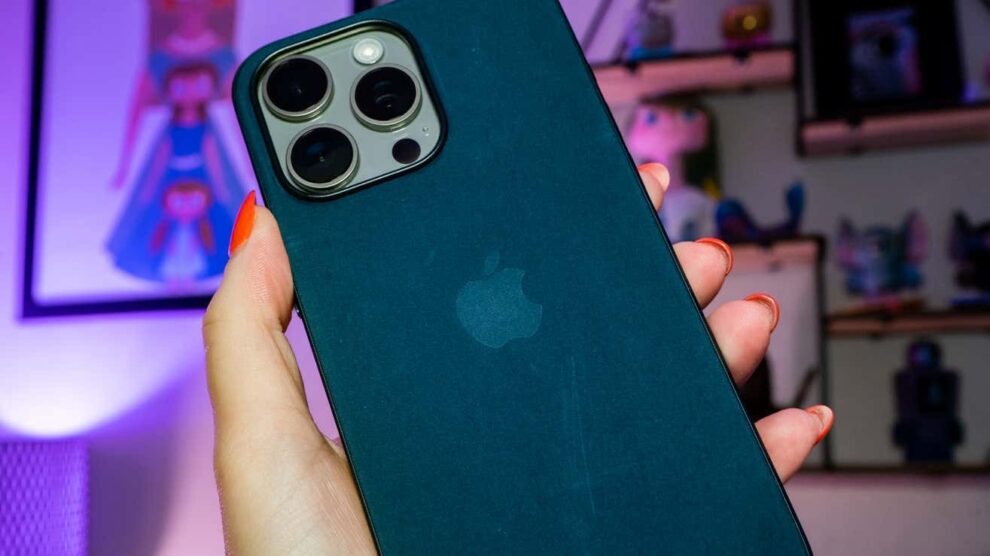Apple recently launched some new accessories for the iPhone 15 lineup, including the Finewoven Case made of woven fabric. But shortly after landing on Amazon, the case attracted a prominently displayed warning about its high return rates from customers.
This article analyzes the key controversies around the iPhone 15 case, customer complaints driving returns, and what it means for future accessories from Apple.
The Warning Message on Amazon
Here is the exact warning being shown to potential buyers on the iPhone 15 Finewoven Case product page on Amazon:
“Frequent returns: This item is frequently returned due to dissatisfaction with fit, comfort, or quality.”
This warning is part of a new labeling program by Amazon alerting customers about certain problematic items that see unusually high return volumes compared to other goods in their categories.
For Apple’s latest iPhone case offering, this means a sizeable chunk of customers face issues with aspects like size, ergonomics or durability – enough for Amazon’s algorithms to flag the trend.

What Customer Complaints are Driving Returns?
Analysis of buyer reviews and complaints around the iPhone 15 case sheds more light on why so many made the decision to return it:
Discomfort and Fit Issues
Multiple negative reviews centered on the iPhone 15 case feeling uncomfortable, awkward or even painful to hold for long periods. Some noted problems with grip and finding a secure way to use it during activities like texting or photography.
Others pointed out issues with fit – the case either felt too loose or tight wrapping around their devices. These kind of ergonomic issues likely made everyday usage frustrating for affected customers.
Durability and Protection Concerns
Several customers also reported durability problems with the woven fabric case model failing to survive regular wear and tear:
- The material picked up permanent stains easily
- Edges frayed from friction inside tight pockets
- Fabric detached from the plastic holder over time
Without adequate protection for an expensive mobile device, customers understandably felt compelled to return the Apple iPhone case for a refund.
Not Meeting Expectations
Finally, some customers indicated the unique woven aesthetic that initially attracted them to the case failed to meet real world expectations:
- The fabric looked and felt more synthetic or “cheap”
- The original color schemes were not accurately represented
This product quality gap seems to have fueled many post-purchase returns once buyers experienced it firsthand.
What Does This Mean for Apple’s Accessories?
The high return rate warning for Apple’s latest iPhone 15 case tells an important story about the company’s recent track record with mobile accessories:
Declining Quality Control
The number of complaints over aspects like fraying, staining and durability issues point to the possibility of declining quality control standards from Apple. As the company expands its accessory catalog, more products with less comprehensive testing may be slipping out.
Form Over Function?
The discomfort and awkward fit many users experienced also raises questions over Apple valuing sleek, aesthetic designs more than functional performance for accessories like cases.
This could result in form taking precedence over core buyer needs like ergonomics and protection.
Overpromising Innovation
The gulf between how Apple marketed the pathbreaking woven case versus how it actually performed also hints at overpromising innovation that fails to deliver.
As Apple faces more criticism over incremental iPhone upgrades, this tactics could be bleeding into its accessories too – trickling down as dissatisfaction into return rates.

What Can Apple Do Going Forward?
To restore confidence in its accessories division, experts recommend Apple undertake steps like:
- Improving quality control across its supply and manufacturing partners
- Refining accessory testing protocols to catch issues pre-launch
- Designing truly ergonomic accessories suited for daily, rigorous use
- Tuning marketing to accurately convey new product capabilities and limitations
Adopting measures like these could help Apple transform both process and culture to deliver accessories living up their premium branding – key to competing with rivals innovating aggressively on cases and other mobile peripherals.
Conclusion
The high volumes of returns faced by Apple’s woven iPhone 15 case provides an unusual warning signal for the company’s accessories division. By addressing root causes driving customer dissatisfaction, Apple can still turn around perceptions and prevent such missteps in the future.
But it requires soul searching across product design, quality control and marketing to refocus on functional performance – not just aesthetic allure. The coming few accessory launch cycles will prove pivotal in determining if Apple heeds the lessons of controversies like this woven case.










Add Comment